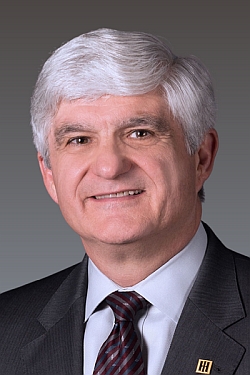Podcast: Play in new window | Download (33.3MB)
We take a look at the Boeing Safety and Quality Plan, the NTSB recommendations after the Southwest/FedEx near miss, the suspension of some ATC staff in India, Essential Air Service contracts, BARK Air’s lawsuit over airport-use restrictions, the sale of a B-17, and the NTSB inspection of the USAirways flight 1549 engines.
Aviation News
Boeing Safety & Quality Plan
Boeing had 90 days to deliver a comprehensive plan to the FAA to improve the company’s safety management and quality assurance, including in the supply chain. We look at The Boeing Product Safety and Quality Plan Executive Summary [PDF, 11 pages.]
The Plan includes the containment and mitigation actions Boeing took immediately after the accident. It also introduces Boeing’s new Key Performance Indicators (KPIs) of production system health and associated control limits for each KPI. Boeing intends that these metrics will provide “a continuous assessment of factory health and provide early warning of emerging quality and safety risks. They also will facilitate tracking of Boeing’s improvement under the Product Safety and Quality Plan and guide decisions about system readiness for rate increases.”
Boeing’s Immediate Containment and Mitigation
Improvements directed at the Boeing production system:
- Revised the build plans, training, maintenance planning, aircraft manual documentation, removal requirements and inspection criteria for the Mid-Exit Door (MED) plug;
- Instituted additional controls to prevent defects in the MED plug and similar structures and assemblies;
- Added conformance inspections to nine critical build points;
- Processed fleet and production inspection findings through Boeing’s SMS and Quality Management System (QMS);
- Published alerts on removals and rework, signed by all factory employees;
- Hosted representatives from 737 airline customers to review Boeing’s production and quality procedures, and to provide feedback;
- Appointed a recognized safety and quality leader, Admiral Kirkland Donald, to independently assess Boeing’s production system; and
- Implemented a revised management and salaried compensation model focused on quality and safety, with aligned key performance indicators across all programs.
Improvements directed at the Boeing supply chain:
- Instituted additional controls at Spirit to prevent defects in the MED plug and similar structures and assemblies;
- Added new inspections at Spirit, as well as pre-shipment approval requirements on fuselages prior to shipment to Boeing;
- Added competency assessments for all supplier mechanics doing structural work at Boeing sites; and
- Issued supplier bulletins to strengthen focus on conformance and reduce the risks of defects being shipped.
Key Performance Indicators
A significant component of the Product Safety and Quality Plan is the identification of six critical, safety-focused production health KPIs:
- Employee Proficiency (measures share of employees currently staffed to commercial programs who are proficient);
- Notice of Escape (NoE) Rework Hours (measures rework due to Fabrication and supplier-provided escapes to Final Assembly);
- Supplier Shortages (measures Fabrication and supplier shortages/day);
- Rework Hours per airplane (measures total rework hours per airplane in Final Assembly);
- Travelers at Factory Rollout (measures jobs traveling from Final Assembly); and
- Ticketing Performance (measures average escapes per ticketed airplane).
Each KPI also has associated control limits and defined criteria that will trigger corrective action and SMS risk monitoring.
Product Safety and Quality Plan Attention Areas
Safety Management System three main initiatives:
- Streamlining employee reporting channels; [Submissions are up 500%]
- Addressing traveled work risk; [implemented a “move ready” process—737 airplanes may not move to the next factory position until identified build milestones are completed, unless a Safety Risk Assessment (SRA) is conducted and a mitigation plan is in place.]
- Deepening the integration of Boeing’s SMS with the QMS.
Simplification of Processes and Procedures [To help employees better understand their obligations, execute work instructions, and deploy solutions to overcome roadblocks.]
Supply Chain Defect Reduction
- Strengthening data and analytics capabilities to provide proactive notification of supplier issues, including the creation of an advanced analysis tool;
- Standardizing supplier oversight actions to prioritize safety and quality, including through the implementation of a common supplier engagement model;
- Simplifying and improving supplier quality processes;
- Driving industry change and dialogue about quality and safety issues.
Training
- Planned enhancements in late 2024,
- New manufacturing and quality employees will receive up to two more weeks of foundational training, followed by enhanced structured on-the-job training (SOJT)
Production System Compliance
- Foreign Object Debris (FOD) control;
- Tool control;
- Parts and materials control;
- Employees’ adherence to work instructions.
Engagement and Communications
- Holding full-day quality stand downs and Safety and Quality events across the Company;
- Creating and supporting Employee Involvement Teams (“EITs”) to conduct weekly problem-solving sessions and review employee ideas for improving the production system;
- Establishing a leadership program for manufacturing, quality, and fulfillment managers;
- Improving the Company’s messaging about safety, quality, and compliance.
Installation Plan Improvements [work plans]
Special Audit Items
- For Boeing quality escapes;
- Boeing liaison engineering and Material Review Board (MRB) issues;
- and Boeing’s approach to Spirit-related findings
Expert Review Panel Recommendations
Boeing agrees with the findings and recommendations of the Expert Review Panel.
NTSB Proposes More Training, Tech After Southwest and FedEx Jets Near-Miss in Texas
In February 2023, Southwest Airlines and FedEx jets came close to colliding in Austin, Texas. After seeing the Southwest Boeing 737-700 plane at the last second, the FedEx pilots flew their Boeing 767-300 over the Southwest jet to avoid a collision. The two planes were only about 150 to 170 feet apart.
The NTSB determined the probable cause of the near miss was a bad assumption by the air traffic controller that the departing Southwest plane would be clear before the FedEx plane landed on the same runway.
The Board also identified two contributing factors:
- Southwest crew members failed “to account for the traffic on short final approach and to notify the controller” that they would need additional time for takeoff.
- The FAA did not require surface detection equipment at the Austin airport.
India’s Aviation Regulator Suspends Mumbai ATC Staff Involved In IndiGo & Air India Airbus A320neo Close Call
The IndiGo A320neo was on approach to Runway 27 at Chhatrapati Shivaji Maharaj International Airport (BOM) in Mumbai, India. The plane touched down seconds after an Air India A320neo had departed the same runway. The Directorate General of Civil Aviation (DGCA) is investigating and has “derostered” the ATC staff working at the time of the incident.
Video: Indigo a320 Landing and Air India a320 Takeoff at The Same time at Mumbai Airport
JetBlue Awarded First-Ever Essential Air Service Contract
JetBlue will serve Presque Isle under a two-year contract.
The Essential Air Service (EAS) program was implemented to guarantee that small communities served by certified air carriers before airline deregulation maintain a minimal level of scheduled air service.
This is generally accomplished by subsidizing two round trips a day with 30- to 50-seat aircraft, or additional frequencies with aircraft with 9-seat[s] or fewer, usually to a large- or medium-hub airport. The Department currently subsidizes commuter and certificated air carriers to serve approximately 60 communities in Alaska and 115 communities in the lower 48 contiguous states that otherwise would not receive any scheduled air service.
2024-6-3 Order Selecting Air Carrier
Posted by the Department of Transportation on Jun 4, 2024:
“By this Order, the U.S. Department of Transportation (the Department) selects JetBlue Airways Corporation (JetBlue) to provide Essential Air Service (EAS) at Presque Isle, Maine (Presque Isle), for the two-year term from September 1, 2024, through August 31, 2026. JetBlue will provide Presque Isle with seven (7) nonstop round trips per week from Presque Isle International Airport (PQI) to Boston Logan International Airport (BOS) using 100-passenger Embraer E190 (E190) aircraft for the first year and 140-passenger Airbus A220-300 aircraft for the second year. JetBlue will be compensated at the annual subsidy rates outlined below.”
BARK Air for dogs sued days after first flight
Westchester County sued BARK Air alleging violations of the county’s airport-use restrictions. Those restrictions include a prohibition on the operation of commercial and chartered aircraft with more than nine seats from using the private jet terminal. BARK Air’s Gulfstream Aerospace GV jet has 14 seats. In a filing to the FAA, Westchester County said that the public charters “closely resemble” services offered by large, commercial airlines.
Michigan Flight Museum (former Yankee Air Museum) Sells Centerpiece B-17 ‘Yankee Lady’
The Boeing B-17G has been sold to an undisclosed buyer for an undisclosed price. For some 40 years, the museum generated revenue with rides on the B-17. The money from the sale will be invested to support the museum.
Mentioned
NTSB Docket No. SA-532 Exhibit No. 8-A
William (Bill) Anders, Apollo 8 astronaut, Killed in San Juan Islands Plane Crash
Apollo 8: Earthrise
Hosts this Episode
Max Flight, Rob Mark, and our Main(e) Man Micah.
- SEO Powered Content & PR Distribution. Get Amplified Today.
- PlatoData.Network Vertical Generative Ai. Empower Yourself. Access Here.
- PlatoAiStream. Web3 Intelligence. Knowledge Amplified. Access Here.
- PlatoESG. Carbon, CleanTech, Energy, Environment, Solar, Waste Management. Access Here.
- PlatoHealth. Biotech and Clinical Trials Intelligence. Access Here.
- Source: https://www.airplanegeeks.com/2024/06/12/801-boeing-plan/





